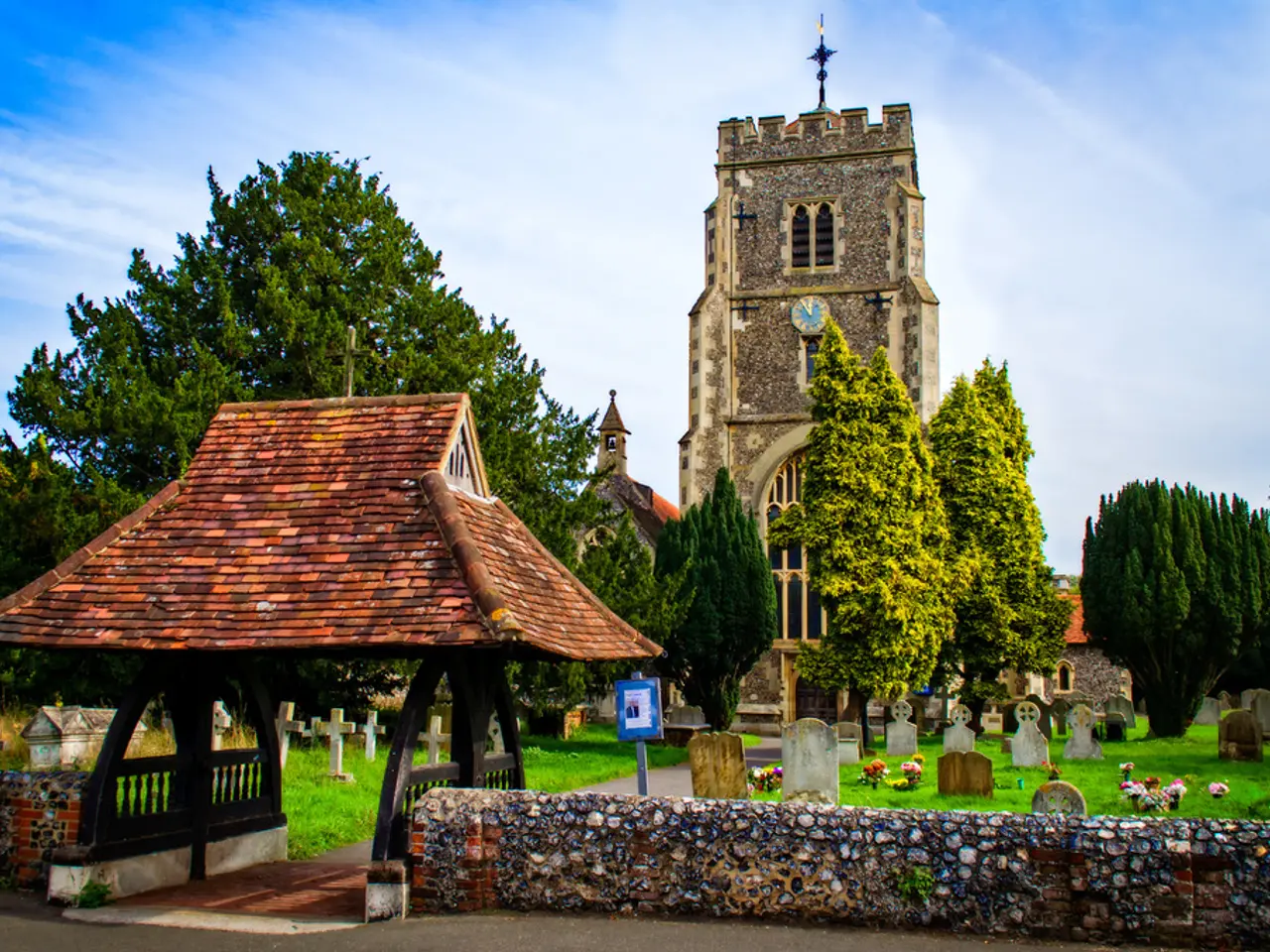Struggles with obtaining planning permission for Christian Horner and Geri Halliwell's historic countryside property
Modernizing a Grade II-Listed Mansion in Oxfordshire: Balancing History and Modernity
The process of modernizing a Grade II-listed mansion in Oxfordshire is no easy feat. The property, owned by a local couple, has faced numerous challenges in securing planning permission for various additions and alterations.
The mansion, nestled within a conservation area, is subject to strict regulations. Any works, including adjustments to the timber gates and the construction of new stables and equestrian facilities, require listed building consent on Grade-II properties.
The initial application for gate adjustments was refused due to road safety concerns and impact on the historic setting. However, after revisions and consultations, the council approved a modified proposal that moved the gates further back.
Plans for new stables sparked objections, delays, and even retrospective applications. The council granted permission for the new stables, but with firm restrictions: they can only serve private horse care, and lighting must be carefully controlled. However, there were reports that the construction of the new stables interfered with mobile phone reception in parts of the village.
Neighbors voiced strong objections to the new stables, describing them as "hideous" and claiming they spoiled the rural views and village atmosphere. Similar sentiments were expressed when the couple erected an oak-framed pergola and gazebo in the garden without seeking prior planning permission. A retrospective planning application was submitted in response, and if permission is denied, the structures could be ordered to be dismantled.
Perhaps the most contentious addition to the estate has been the proposal for a large outdoor swimming pool. Its proximity to the village church sparked vocal opposition from neighbors, with one resident describing it as "the height of disrespect," worrying about disruptions to funeral services. To address these concerns, the council recommended archaeological surveys to safeguard any buried remains before granting permission for the swimming pool.
The swimming pool project reflects the delicate balance between lifestyle desires and community sensitivities. Modernizing a Grade II-listed mansion involves significant challenges related to conservation requirements, costs, skilled craftsmanship, and balancing historic preservation with modern functionality.
Conservation of such listed mansions typically mandates repair rather than replacement of historic components, the use of authentic, breathable materials, engagement of specialist craftsmen trained in traditional techniques, and strict oversight from heritage bodies. These practices are broadly relevant to other historic homes, and the costs and complexities noted in cruck house restoration directly translate to such listed mansion projects.
In summary, the chief challenges in modernizing a Grade II-listed mansion in Oxfordshire are navigating heritage conservation restrictions and approvals, sourcing traditional materials and skilled craftsmen, managing high costs and long timelines, balancing historic preservation with modern comfort and safety requirements, addressing structural repairs sensitive to the building’s original fabric, and overcoming potential latent defects or weak points identified during conservation work. These challenges require a multidisciplinary approach involving conservation architects, heritage consultants, and specialized contractors to ensure the mansion’s historic value endures alongside carefully integrated modern enhancements.
[1] Conservation Principles for Medieval Cruck Beam Houses
[2] Oxfordshire Construction Issues: A Case Study in Heritage Building Repairs and Refurbishment
- Seeking guidance from design manuals on conservation principles for medieval cruck beam houses could prove helpful in maintaining the authenticity of the mansion during renovation.
- When considering changes to the lighting system in the home, the couple may want to prioritize eco-friendly and energy-efficient alternatives to minimize their carbon footprint.
- Education on self-development in project management could be beneficial as the process of renovating the Grade II-listed mansion is complex and requires meticulous planning.
- To foster better relationships with neighbors during the renovation process, it's important for the couple to keep them informed about the project's progress and address any concerns promptly.
- In addition to pets, the couple may also consider incorporating fish in their newly designed outdoor pond as a way to contribute to the overall serenity of the landscape.
- The cottage-style extension of the mansion could include dedicated spaces for hobbies, such as a fashion-and-beauty studio or a study for researching travel destinations.
- To balance modernity with the historical charm of the mansion, the couple can explore options for blending contemporary cars with traditional carpentry in the garage design.
- After the renovation is complete, the couple can organize a housewarming party, inviting friends and family to celebrate their new home, while simultaneously engaging in some light casino-and-gambling entertainment.
- To preserve the historical value of the mansion, the couple could learn about conservation strategies for listed mansions and share this knowledge through workshops or lectures in education-and-self-development seminars within their local community.
- While shopping for renovation materials, it's crucial that the couple prioritize quality and durability to meet the high standards required in the restoration of Grade II-listed buildings, ensuring their home stands the test of time.




